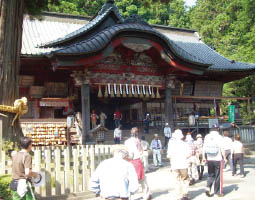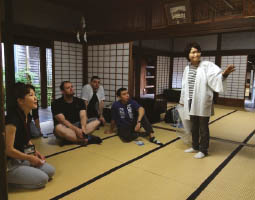Home > Highlighting JAPAN > Highlighting Japan April 2019 > Heisei Highlights
Highlighting JAPAN


The Past and Future of World Heritage Site Mount Fuji
Japan’s iconic Mount Fuji—which spans both Yamanashi and Shizuoka prefectures—was registered by UNESCO as a World Heritage Site in 2013. The path to achieving that status for the peak known as Fujisan and its environs took well over a decade. Here is how Japan made it happen, the twenty-five spots that the site encompasses, and their significance and future.
According to Hirofumi Irikura, director of the Fujisan World Heritage division of Yamanashi Prefecture’s Resident Affairs Department, the process of nominating Mount Fuji as a World Heritage Site began around 2000.
“That year the council of the Agency for Cultural Affairs announced their strong desire to make the mountain a World Heritage Site, which required them to show that it is a cultural property. The Fujisan World Cultural Heritage Council was created in 2005 so that associated organizations could consult each other. Around this time the administrations from Yamanashi and Shizuoka prefectures also joined forces to create drafts and come up with concrete ideas.” Mount Fuji’s repeated eruptions had led people to consider it a god—although an angry one—and therefore sacred. From the Heian Period (794-1185) to the fourteenth century ascetics also used its environs as training ground, and by the Edo Period (1603-1867) many people gathered to worship Mount Fuji. That adulation continues to this day, and the mountain is mentioned in many historical documents such as the Manyoshu and Kokinshu. It is also frequently depicted in art, such as the Thirty-Six Views of Mount Fuji by ukiyo-e artist Katsushika Hokusai.
With this notable background in mind, those in charge began selecting key Shinto shrines, historical homes and beautiful landscapes with the assistance of experts, relevant ministries and agencies, and collecting information on how Fujisan became a place of worship and had cultural and artistic value, and presented a document to the people concerned.
“Mount Fuji is an important place for Japan, so the recognition isn’t just due to the efforts of the two prefectures, but by Japan-wide efforts,” says Irikura.
A total of twenty-five spots—including four climbing routes, multiple shrines, Fuji five lakes, Oshino Hakkai springs and the seaside pine tree grove known as Miho no Matsubara—were designated. The official title became “Fujisan, sacred place and source of artistic inspiration.” Nearly 300,000 people climb to the mountain’s summit and around twenty million people visit the foothills of Mount Fuji each year. Even after recognition as a World Heritage Site, Associated organizations in the Heritage Council continue to maintain the environment and artistic value of Mount Fuji and its designated elements.
“Yamanashi Prefecture enacted new regulations which stipulate that businesses must forecast and evaluate impact prior to constructing new buildings, so as not to disrupt the natural scenery,” says Sadamitsu Kashiwagi, another member of Irikura’s division. “To preserve the scenery, we’ve asked shops there to change their exteriors, removed advertisement boards and utility poles, and planted grasses to conceal rockfall protection walls.”
Both Yamanashi and Shizuoka also built Mount Fuji World Heritage centers. They showcase the natural wonders of the mountain and also explain why it is considered sacred, why it inspired so many works of art, and provide information about new discoveries.
“Why have generations of Japanese people loved Mount Fuji?” Irikura asks rhetorically. “For visitors to get a better understanding, we recommend taking part in pilgrimage tours where you can experience the traditional way of climbing the mountain. During the course, you get to visit shrines of the mountain gods, stay overnight at a pilgrim lodging house, try the cuisine the oshi priests ate, and trek on the ancient roads on the following day.”
Besides assisting in the pilgrimage tours, Yamanashi Prefecture has also made model itineraries based on historical pilgrimage routes. There are plans to create even more ways to experience the culture of Mount Fuji and get more visitors interested in its peak experience.
© 2009 Cabinet Office, Government of Japan









